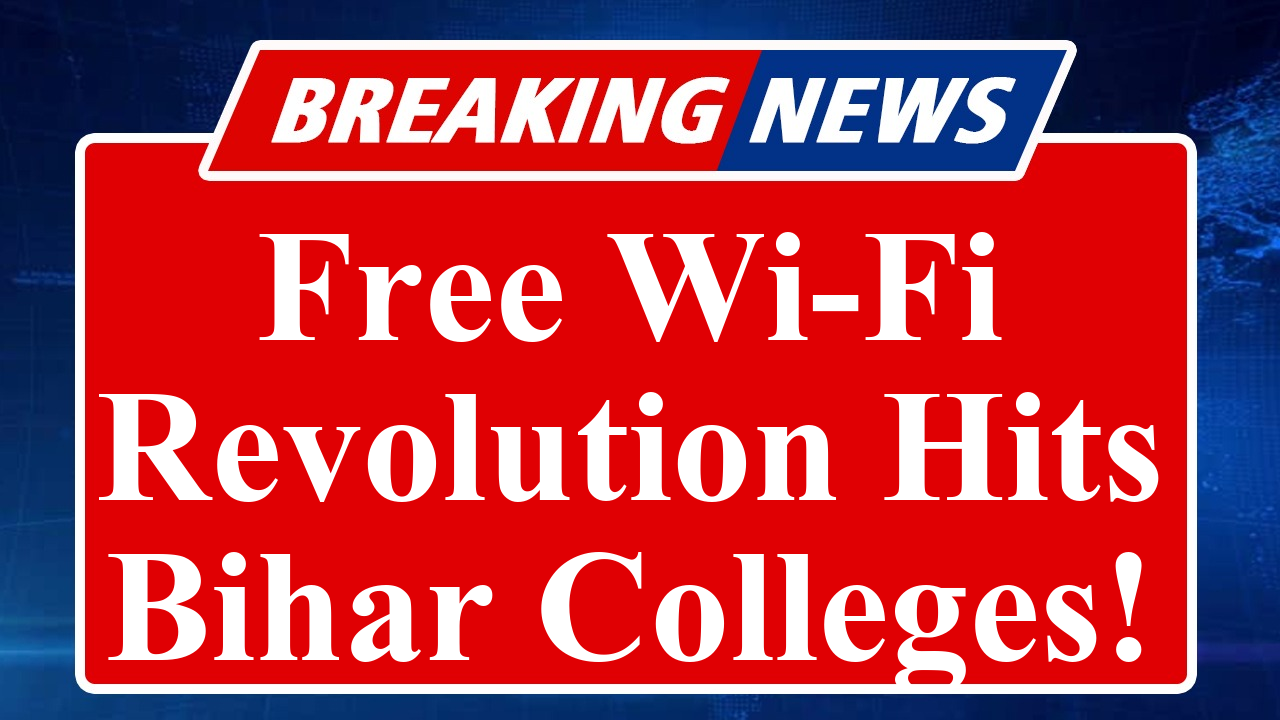Bihar’s government is set to provide free Wi-Fi to 100 colleges by June 2025, enhancing digital access for students. The initiative, part of the state’s digital drive, aims to bridge the digital divide, boost e-learning, and empower youth. With infrastructure upgrades and partnerships, the project targets seamless connectivity to support academic growth and digital literacy across Bihar’s educational institutions.
Bihar Launches Ambitious Plan to Connect 100 Colleges with Free Wi-Fi
In a significant step toward digital empowerment, the Bihar government has announced a plan to provide free Wi-Fi to 100 colleges across the state by June 2025. This initiative, unveiled on June 21, 2025, aligns with Chief Minister Nitish Kumar’s vision of transforming Bihar into a digitally advanced state. The project builds on earlier efforts under the Saat Nischay (Seven Resolves) program, which prioritized youth development through schemes like free Wi-Fi and student credit facilities.
The Department of Information Technology (DIT), Bihar, is spearheading the initiative, collaborating with Bharat Broadband Network Limited (BBNL) and private telecom partners to ensure robust connectivity. The state has allocated ₹50 crore for this phase, targeting 100 colleges, including medical, engineering, and management institutions. Each college will receive high-speed internet with a daily data limit of 1 GB per student for downloading study materials, accessing e-libraries, and engaging in online learning platforms.
As of July 2025, preparatory work has begun, with 30 colleges already in the process of receiving Wi-Fi infrastructure. The project leverages the BharatNet framework, which has connected over 45,000 villages in Bihar with optical fiber networks. The DIT aims to complete installations in the remaining colleges by mid-2025, ensuring coverage across urban and rural institutions.
Officials from the Bihar State Electronics Development Corporation Limited (BSEDCL) emphasized that the initiative addresses past challenges faced during earlier Wi-Fi projects. In 2017, a similar scheme launched on Bihar Divas faced delays due to inadequate infrastructure and vendor issues. This time, the government has implemented stricter oversight, with regular audits to ensure timely execution and quality equipment, such as high-capacity routers and uninterrupted power supply (UPS) systems.
The initiative is expected to benefit over 300,000 students, enabling access to digital resources critical for competitive exams, research, and skill development. “This is a game-changer for students in rural colleges who often lack access to reliable internet,” said a senior DIT official. The project also includes cybersecurity measures to prevent misuse, such as mandatory user authentication to access the Wi-Fi network.
Bihar’s digital drive extends beyond colleges, with plans to expand Wi-Fi hotspots in public spaces under the PM-WANI (Prime Minister’s Wi-Fi Access Network Interface) scheme. The state aims to integrate these efforts to create a seamless digital ecosystem, fostering e-governance, e-health, and e-education. Educational institutions like Patna University and Magadh University are among the first to be equipped, with smaller colleges in districts like Muzaffarpur and Darbhanga to follow.
Students have welcomed the move, citing the high cost of private internet as a barrier to online learning. “Free Wi-Fi will help us access study materials without worrying about data costs,” said Priya Kumari, a student at Jai Prakash University. However, some challenges remain, including ensuring consistent power supply and maintaining network uptime in remote areas.
The government is also exploring partnerships with edtech platforms to provide curated content for students, enhancing the utility of the Wi-Fi network. With Bihar’s median age projected at 29, this initiative is poised to empower a young, tech-savvy population, driving the state’s socio-economic progress.
Disclaimer: This article is based on recent announcements and reports from government sources, press releases, and reliable news outlets. Information is subject to change as the project progresses. Readers are advised to verify details through official channels like the Department of Information Technology, Bihar, or BharatNet portals.

